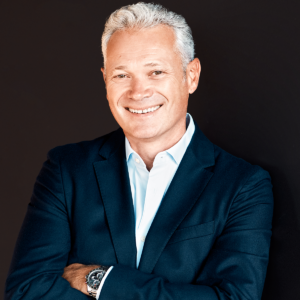Stéphane Coruble, CEO of RTL AdConnect, discusses how television has shown its relevance in contemporary society.
It’s against this background that we’ve assembled this edition of our annual TV Key Facts publication. It still has all the information you’ve come to expect: the latest statistics, the important trends and innovations in measurement and brand safety, as well as insightful commentary from the brilliant media experts who’ve contributed – to whom we extend our sincere thanks.
But if TV Key Facts 2020 had left out the impact Covid-19 has had, and will continue to have on our business, it would have told only half the story. So, within these pages, you will also find some insightful reports about how lockdown impacted us and how we, as an industry, responded.
In spring 2020, with everyday life turned on its head, people sought information and familiarity. So we turned to television. TV became the source of trustworthy, real-time information about the pandemic and the window through which we could glimpse our old lives. And it became the way for families – even elusive youngsters – to come together and share an experience.
Lockdowns also had a big impact on young audiences. For instance in France with +36% viewing time (March 2019 versus March 2020) on people aged 15 to 34 years old[4].
skyrocketed around
the world
Shared viewing also grew sharply – for example in the UK where it increased by 30%[5]. Watching content across all platforms increased, too. And we expect this trend to be holding in coming months. In the UK, for example, Total Video consumption is expected to rise 14% year on year (2020 vs 2019)[6].
Broadcasters were quick to react – adapting sets to accommodate social distancing, turning homes into makeshift studios, and even developing whole new formats at lightning speed. Read more about this on page 24.
Advertisers also responded in some extraordinary ways. For some, this meant keeping their campaigns going under difficult financial circumstances. For others, it was about returning to screen as soon as travel restrictions were lifted. A good example of the latter was the Turkish Culture and Information Office’s large-scale campaigns, promoting the country even when borders had not completely reopened, which ran in Germany and the UK.
Creativity rose to another level, too, with unique projects and collaborations. In Spain, for example, brands including Lidl, Lexus and Direct Line appeared side by side in an emotional ad called ‘Brillar’, created by Atresmedia Publicidad, which celebrated the easing of one of the continent’s strictest lockdowns.
In the UK, ITV came up with the brilliant idea of a People’s Ad Break featuring homemade versions of classic TV ads submitted by viewers. In Germany, meanwhile, a collaboration between Ferrero and Ad Alliance around the Kinder brand reminded viewers of ways to share the joys of Easter even when meeting in person was not possible.
Television – both linear and non-linear – proved itself in other ways this year, too.
Digital transition continues apace – accelerated by the pandemic – and consumers’ love of exclusive content in whatever form it may come remains clear. So we need to continue to invest in this across all our platforms – for linear TV, but also specifically for BVOD platforms. And this is a trend that our sister companies M6 in France and ITV in the UK are already pioneering on their respective BVOD services 6play and ITV Hub.
M6 has created M6 extended – a sub-section on its 6play streaming platform offering extra content to stream from well-known formats, such as The Real Housewives. ITV Hub similarly gives viewers exclusive access to the undiscovered scenes from summer favourites Love Island and Britain’s Got Talent.
Meanwhile, our sister company RTL Nederland is reinventing the subscription model of its popular Videoland platform to include hybrid rate card models.
There have been many bright points. Yet the fact remains that everyone in TV – linear TV especially – faces incredible challenges. Adspend is down across the board. And competition for viewers will remain fierce as subscription video-on-demand and ad-funded VOD services multiply.
Despite this, we have seen signs of recovery over the summer and the Q4 outlook is promising.
skyrocketed around
the world
[2] Source: M6, Rai, Atresmedia, ITV, MG RTL, Local institutes (Mediametrie, AGF, BARB, Kantar, Auditel), W13 2020 vs W13 2019, Total TV Viewing, Ind 3+4/+;
[3] Source: RAI, Auditel, W13 2020 vs W13 2019, Total TV Viewing, Ind 4+
[4] Source: Médiamétrie, Glance, time-shifted viewing: live + VOSDAL + 7 days; all day 03:00- 27:00, March 2019 vs March 2020
[5] Source: Thinkbox, May 2020, BARB weeks 13-19 2020 vs weeks 13-19 2019. All data based on live TV set viewing
[6] eMarketer, Time Spent with Media, April 2020




















